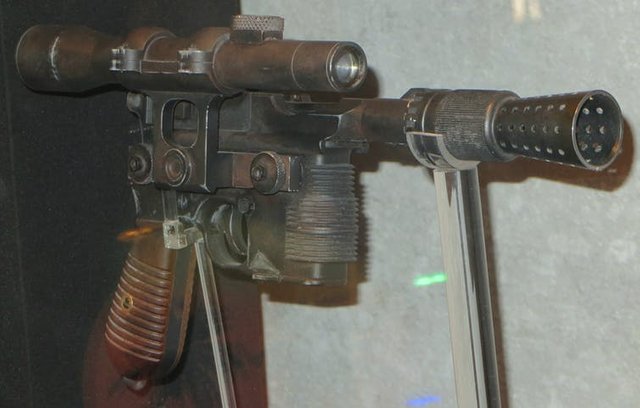
People who consider physics boring are enormously mistaken. It is able to explain everything in the world, from terrible interactions on tiny atomic and particle scales to the behavior of entire universes. And if this is not enough, with the help of physics you can estimate how realistic the technologies of the future in science fiction are. Martin Arker, an expert in the physics of cosmic plasma, can explain many of the nuances of the work of lightsabers and the Death Star in the "Star Wars" universe, for example.
Now he is working on assessing the realism of blaster weapons, which, among others, Khan Solo used - and how blasters can be compared to light swords. In fact, real versions of these weapons have long been developed. Therefore, when the prequel film about Solo came out, it's time to tell more about this.
The key to understanding the technology of Star Wars will be plasma - the so-called "fourth state of matter" (in addition to solid, liquid and gaseous). These are freely flowing electrically charged particles, which naturally interact with electric and magnetic fields. Plasma is common in space but is rarely found in nature on Earth. However, it can be created in the laboratory.
Power Plasmoids
A common misconception about blasters will be that it is a laser weapon. But according to the canon of "Star Wars" this would not make sense. Instead, the authors stated that the blaster was "any type of long-range weapon that fired clots of intense plasma energy, often mistakenly accepted as lasers," and that it converted "energy-enriched gas into a glowing particle beam that could burn the target." It turns out that the blaster clusters (glowing projectiles) are just drops of plasma, something like a light sword flying through the air.
The coherent masses of the plasma and the associated magnetic fields are known as plasmoids. Within the protective shield of the Earth - the magnetosphere - plasmoids are usually formed in a poorly understood process of magnetic reconnection. This is an explosive reconfiguration of the magnetic field lines, which occurs in the presence of a plasma, in particular at the place of plasma pooling. When this occurs within our magnetosphere, charged particles are accelerated toward the upper part of the atmosphere, giving birth to a polar aurora. A huge amount of material is also ejected from the Earth in the form of plasmoids.

However, creating a plasmoid on Earth is not so easy. We can demonstrate only structures that rapidly expand and dissolve in the air. The solution to this problem is to use magnets that hold the hot plasma.
Nevertheless, blaster clusters are shells, so they can not be supported by magnets externally throughout their movement. Fortunately, there is a solution. Since the plasma is highly conductive, it is possible to adjust the electric current in the plasmoid itself. This current will generate magnetic fields that hold the plasma. These mechanisms are known as spheromaks, and over the past twenty years they have attracted additional interest in experiments in the field of plasma physics.
Real versions
One way to create a spheromak is to use a "plasma railgun," a device that uses an external magnet to induce currents in the plasma, and also accelerates the projectile to high speeds. In fact, spheromak, living several hundred microseconds, allowed to develop a speed of up to 200 km / s. This is quite impressive and definitely allows them to be used as a weapon.
In the 1970s, the US Air Force Research Laboratory in Albuquerque established the SHIVA Star program (named after the multi-armed god in Hinduism), within which various branches of the practical application of plasma physics were developed. One of them - MARAUDER - formed the basis of one of several US initiatives to create projectiles based on plasma.
This weapon was capable of producing donut-shaped rings from plasma and lightning balls that exploded with destructive thermal and mechanical effects when hit at the target, creating a pulse of electromagnetic radiation capable of turning off electronics. But since 1993, the status of this weapon remains uncertain.
The temperatures that could be achieved in such devices were a thousand times higher than the solar ones. Having enough plasma, each clot would cause huge damage, so the blaster from Star Wars looks quite realistic.
But how could this real blaster weapon compete with another sign weapon from the Star Wars, a light sword? The blaster cluster is essentially equivalent to the blade of a light sword without a handle. But when two plasma-limited plasmas meet, a magnetic reconnection will be inevitable. That is, in the collision of two lightsabers, an explosive effect would be created, destroying both the weapon and its carriers. But with the blaster you would be far from the explosion and completely unscathed.
Congratulations @roscar! You received a personal award!
You can view your badges on your Steem Board and compare to others on the Steem Ranking
Do not miss the last post from @steemitboard:
Vote for @Steemitboard as a witness to get one more award and increased upvotes!
Downvoting a post can decrease pending rewards and make it less visible. Common reasons:
Submit